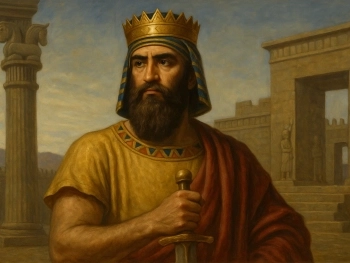
Throughout history, ancient cities often constructed massive walls to protect their inhabitants, with some walls reaching incredible thicknesses of 30, 40, or even 50 feet, and heights of 20 to 30 feet. These formidable structures were not merely architectural achievements; they were lifelines for the survival and prosperity of a city's population. But why did ancient builders dedicate so much effort and resources to creating walls of such impressive scale? Let’s explore the reasons behind these towering fortifications and their historical significance.
The Strategic Purpose of City Walls
- Defense Against Invaders
The most obvious reason for thick and tall walls was defense. Ancient cities faced constant threats from neighboring tribes, rival kingdoms, and invading armies. Walls served as a first line of defense, making it difficult for enemies to breach the city. Thick walls could withstand battering rams, while their height prevented enemies from easily scaling them. - Protection From Siege Weapons
As siege warfare evolved, cities had to adapt. During the Bronze and Iron Ages, armies used weapons like battering rams, siege towers, and later, catapults and ballistae. Thick walls absorbed the impact of these attacks, while tall walls made it harder for siege towers or ladders to reach their summit. - Symbol of Power and Wealth
Walls were also a statement of a city’s strength and prosperity. Massive fortifications demonstrated that the city had the resources and manpower to build and maintain such structures. For example, the walls of Babylon, described by ancient historians, were so impressive that they became one of the wonders of the ancient world. - Psychological Deterrent
A well-fortified city often discouraged potential invaders from attacking in the first place. The sight of massive walls could convince an army to abandon its campaign or negotiate instead of laying siege.
Engineering Marvels: How Were These Walls Built?
Building walls of such immense scale required ingenuity, organization, and resources:
- Material Choices
- Stone: Durable and resistant to weather, stone was a common choice for many city walls, such as those of Jericho and Mycenae.
- Mudbrick: In regions where stone was scarce, mudbrick was used, reinforced with wooden beams or plastered for added strength. The walls of Babylon, for instance, were made of sun-dried and kiln-baked bricks.
- Rubble Core: Some walls, such as those of Troy, were constructed with an outer layer of stone and a core filled with rubble for extra thickness.
- Labor and Organization
Constructing these walls required a coordinated workforce, often consisting of both skilled laborers and conscripted citizens. These projects could take decades to complete, depending on the size of the city and the resources available. - Design Innovations
- Double Walls: Many cities, like Constantinople, built double or even triple layers of walls for added protection.
- Moats and Ramps: Surrounding walls with moats or sloped earthen ramps added another layer of difficulty for attackers.
Biblical Examples of Thick Walls
- The Walls of Jericho
The Bible recounts the story of Jericho, whose walls were so formidable that they were considered impenetrable. Archaeological evidence suggests that Jericho had a double-wall system, with a stone base and mudbrick upper walls. The biblical account of these walls collapsing emphasizes the miraculous power of God (Joshua 6:20). - The Walls of Jerusalem
Jerusalem’s walls were rebuilt and reinforced multiple times throughout history. Nehemiah led one such reconstruction after the Babylonian exile, emphasizing their importance for the city’s protection and identity (Nehemiah 2:17). - The City of Babylon
While not explicitly biblical, Babylon’s walls are referenced in historical texts and were legendary for their thickness and height. These walls reportedly stretched wide enough to allow chariots to race along their tops.
Why Such Extreme Thickness?
- Stability and Strength
Walls had to be thick enough to support their own weight, especially if they were built high. Thicker walls also ensured that they could withstand prolonged sieges and natural erosion. - Defense Against Undermining
Siege tactics often included digging tunnels to weaken a wall’s foundation. Extremely thick walls made this tactic much harder to execute successfully. - Multi-Purpose Design
Thick walls were often hollowed out to create rooms, storage spaces, and even living quarters for soldiers. Some walls also included parapets or walkways, allowing defenders to fire arrows or drop projectiles on attackers.
Symbolic and Spiritual Significance
For many ancient cities, walls were more than just physical barriers—they held deep symbolic and spiritual meaning. In the Bible, walls are often associated with divine protection and security. For instance:
- God as a Wall: The Psalms often describe God as a fortress or wall, symbolizing His protective presence (Psalm 18:2).
- Rebuilding Jerusalem's Walls: Nehemiah’s effort to rebuild Jerusalem’s walls was not just practical but symbolic of restoring the city’s covenant relationship with God.
The towering, thick walls of ancient cities were marvels of engineering, ingenuity, and resourcefulness. They were built to protect, intimidate, and symbolize the strength of the city and its rulers. While modern warfare has rendered such walls obsolete, their legacy remains in the ruins of cities like Babylon, Jerusalem, and Jericho, reminding us of humanity's eternal drive to defend and preserve what matters most.
Do you have insights or questions about ancient city walls or other biblical architectural wonders?
Biblical History Jerusalem Temple In First Century Jerusalem Temple Ancient Cities Archaeology Biblical Archaeology Jerusalem Bible Ancient city walls Walls of Jericho Ancient fortifications Walls of Babylon City defenses Nehemiah and Jerusalem Nehemiah Jerusalem Siege warfare Bible and architecture

















